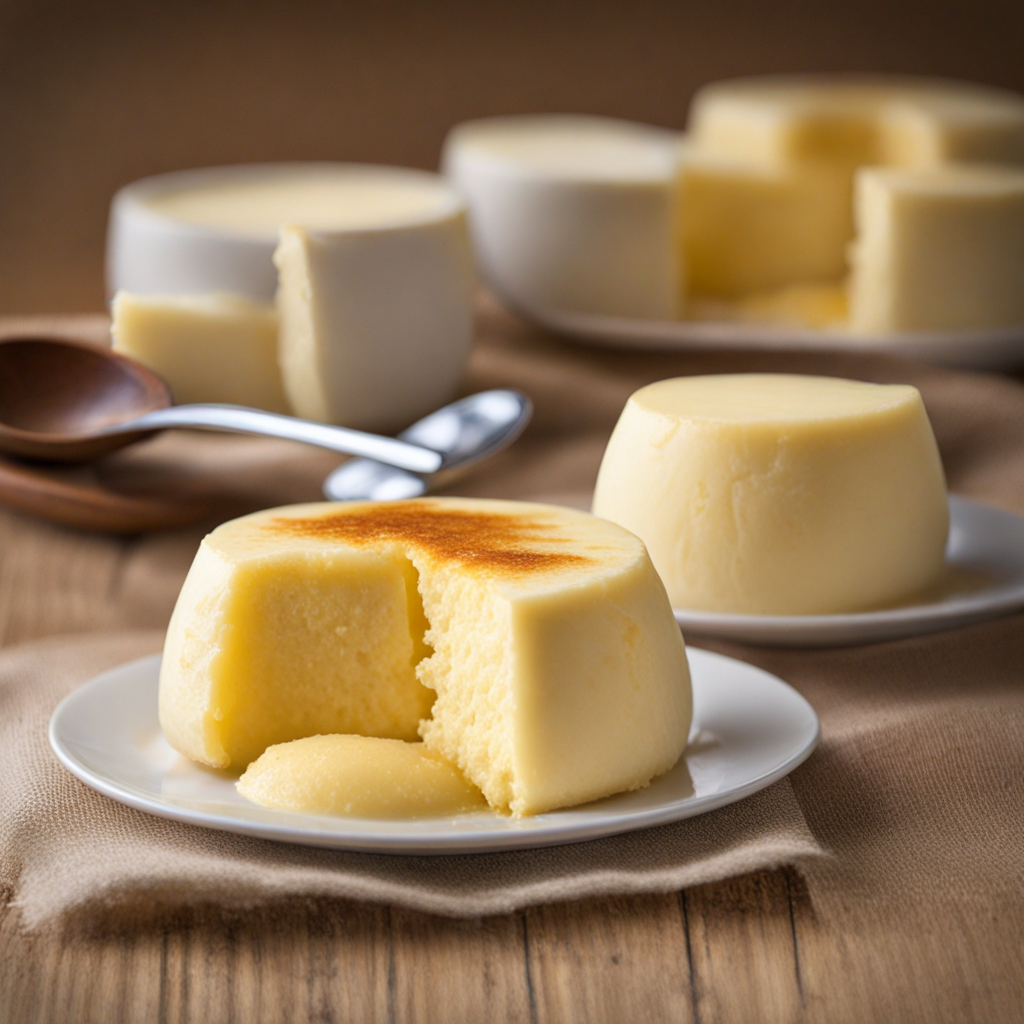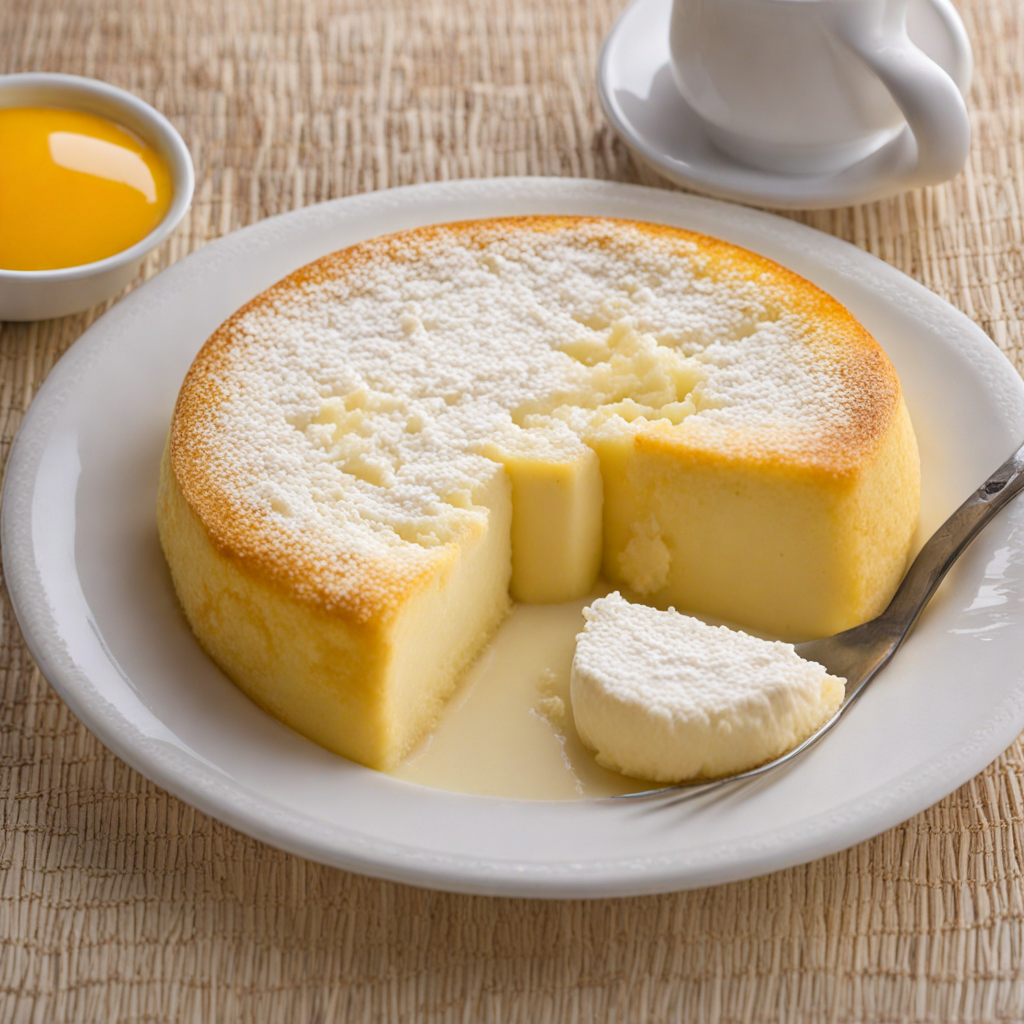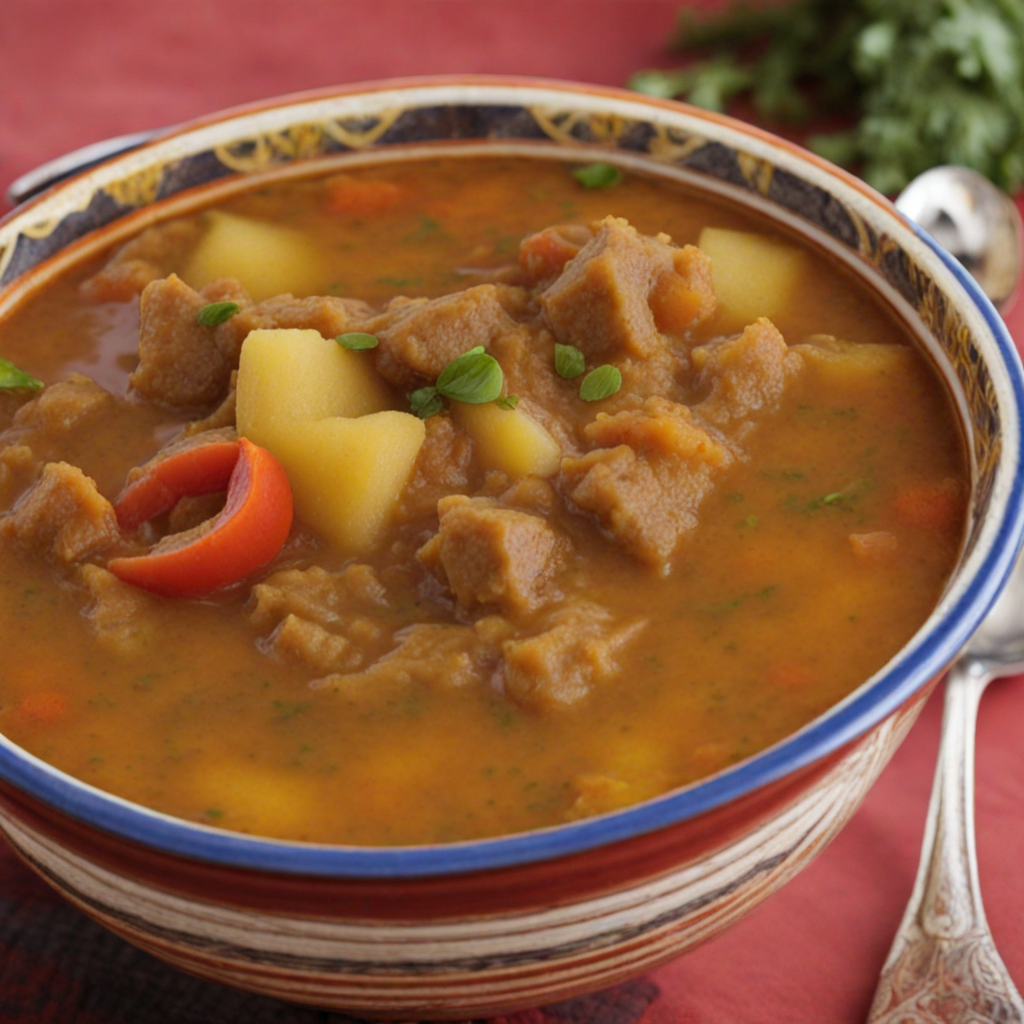Pudim de queijo
Pudim de queijo is a delightful and unique dessert hailing from the vibrant culinary landscape of Cape Verde. This creamy cheese pudding is characterized by its smooth texture and rich flavor, often made using fresh local cheeses, such as queijo fresco. The base of the pudding typically combines ingredients like eggs, sugar, and milk, which are whisked together to create a luscious blend. The addition of cheese elevates the dish, imparting a savory note that beautifully contrasts the sweetness, giving it a distinctive taste that is both comforting and intriguing. What sets Pudim de queijo apart is the way it captures the essence of Cape Verdean culture, reflecting the islands' heritage and love for simple yet flavorful ingredients. The dessert is often baked until golden, resulting in a slight caramelization on the top that adds an appealing visual and textural element. Each bite offers a harmonious balance, as the sweetness of the sugar melds seamlessly with the saltiness of the cheese, creating a palate experience that is both satisfying and memorable. Served chilled, Pudim de queijo is often enjoyed on special occasions, but its deliciousness makes it a popular choice for any gathering. As you take a spoonful, you'll appreciate the way it melts in your mouth, showcasing the craftsmanship behind this traditional dish. Whether indulging in it at a local Cape Verdean restaurant or trying your hand at making it at home, Pudim de queijo promises to be a delightful adventure that will leave you yearning for more.
How It Became This Dish
The History of Pudim de Queijo: A Culinary Gem from Cape Verde #### Origins Pudim de queijo, or cheese pudding, is a beloved dish from the Cape Verdean archipelago, a group of islands located in the central Atlantic Ocean. The history of this dish is deeply intertwined with the islands' unique cultural and historical trajectory. Cape Verde was uninhabited until its discovery by Portuguese explorers in the 15th century, leading to a blend of African, Portuguese, and later, Brazilian influences that shaped the culinary landscape of the islands. The origins of pudim de queijo can be traced back to the Portuguese colonial period. The introduction of dairy products, particularly cheese, played a significant role in the development of Cape Verdean cuisine. Among the various cheeses produced in Cape Verde, the most prominent is "queijo de vaca," a cow's milk cheese that has a rich and creamy texture. This cheese, combined with other local ingredients such as eggs, sugar, and coconut, gave rise to the delicious dessert known as pudim de queijo. The use of cheese in desserts is not uncommon in Portuguese cuisine, with various recipes for savory and sweet cheesecakes existing in the mainland. As Cape Verdean chefs adapted these recipes, they incorporated local ingredients and flavors, leading to a unique interpretation of the pudding that reflects the islands’ character and resources. #### Cultural Significance Pudim de queijo is more than just a dessert; it embodies the spirit of Cape Verdean culture. The islands are known for their vibrant and diverse traditions, shaped by the interplay of African heritage and Portuguese colonial influences. Food plays a central role in this cultural tapestry, serving as a means of connection, celebration, and identity. In Cape Verdean households, pudim de queijo is often a staple during festive occasions, family gatherings, and religious celebrations. It is served as a symbol of hospitality, showcasing the warmth and generosity of Cape Verdean culture. The act of preparing and sharing pudim de queijo brings families and communities together, reinforcing social bonds and cultural ties. Notably, cheese pudding also reflects the resourcefulness of Cape Verdeans. With a history marked by economic challenges, particularly due to the arid climate and limited agricultural resources, Cape Verdeans have developed a knack for making the most of available ingredients. Pudim de queijo exemplifies this ingenuity, transforming simple components into a delightful dessert that highlights the creativity inherent in Cape Verdean cooking. #### Development Over Time As Cape Verde evolved through the 20th century, so too did the culinary landscape, including pudim de queijo. With the islands gaining independence from Portugal in 1975, there was a renewed sense of pride in local culture and cuisine. This period saw a resurgence in traditional recipes, and pudim de queijo gained recognition as a signature dish of Cape Verdean gastronomy. In the years that followed, Cape Verdean cuisine began to attract attention beyond its borders. The diaspora community, particularly in the United States, Europe, and other parts of the world, played a crucial role in promoting and preserving Cape Verdean culinary traditions. Restaurants and food festivals celebrating Cape Verdean food began to emerge, showcasing dishes like pudim de queijo to a broader audience. The recipe for pudim de queijo has also undergone variations over the years. While the classic version remains popular, many chefs and home cooks have experimented with ingredients and presentations. Some have infused the pudding with tropical flavors such as mango, passion fruit, or even cocoa, while others have introduced modern plating techniques to elevate the dish visually. Despite these adaptations, the essence of pudim de queijo—a creamy, sweet, and comforting dessert—remains intact. In contemporary Cape Verde, pudim de queijo can be found in various settings, from humble homes to upscale restaurants. It has become a symbol of Cape Verdean gastronomy, often featured on menus alongside other traditional dishes such as cachupa (a hearty stew) and grilled fish, marking the country’s culinary identity. #### A Global Perspective The globalization of food culture has further contributed to the popularity of pudim de queijo. As Cape Verdean communities continue to thrive abroad, the dish has found its way into the culinary repertoire of diverse locales. Food enthusiasts and chefs are increasingly interested in exploring authentic global cuisines, and Cape Verdean dishes like pudim de queijo have garnered attention for their rich flavors and cultural narratives. Social media platforms have also played a significant role in this culinary exchange. Food bloggers and influencers have shared recipes and stories about pudim de queijo, allowing for a wider appreciation of Cape Verdean cuisine. Cooking classes and cultural events featuring Cape Verdean food have emerged in various cities, offering people an opportunity to experience the dish firsthand. #### Conclusion Pudim de queijo is more than just a delightful dessert; it is a reflection of Cape Verde's complex history, cultural significance, and evolving culinary traditions. From its origins in the fusion of Portuguese and African influences to its status as a beloved staple of Cape Verdean celebrations, this cheese pudding encapsulates the resilience and creativity of the Cape Verdean people. As culinary boundaries continue to blur in our globalized world, pudim de queijo stands as a testament to the richness of Cape Verdean cuisine. It invites us to savor not only its flavors but also the stories and traditions that it carries, reminding us that food is a powerful means of connection across cultures and generations. Whether enjoyed at a family gathering in Cape Verde or at a restaurant in a distant city, pudim de queijo remains a cherished symbol of cultural heritage and communal joy.
You may like
Discover local flavors from Cape Verde







